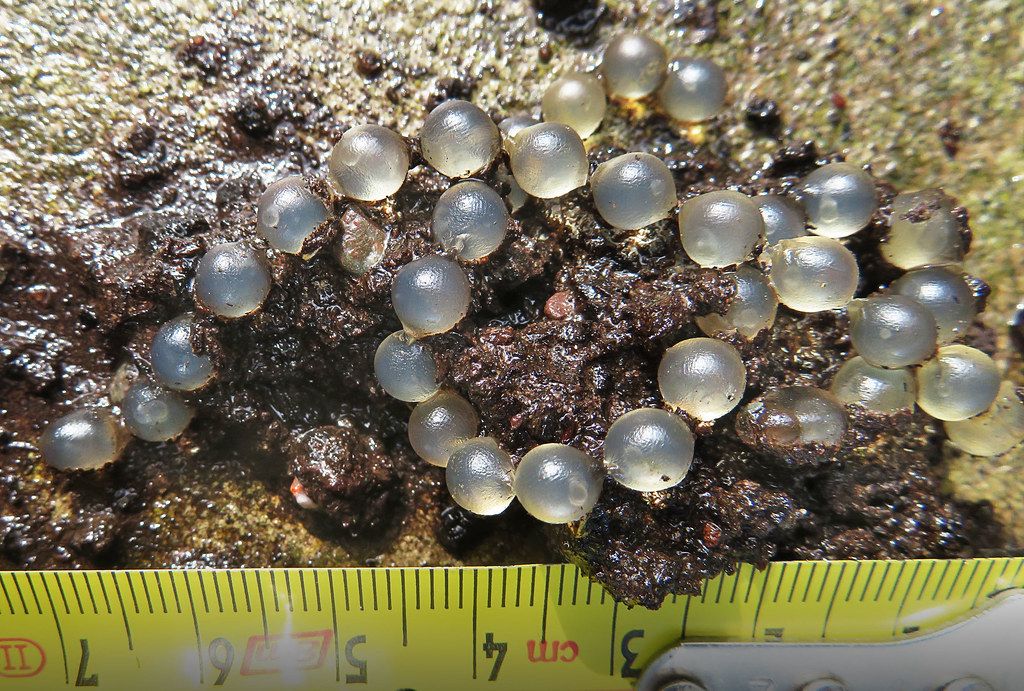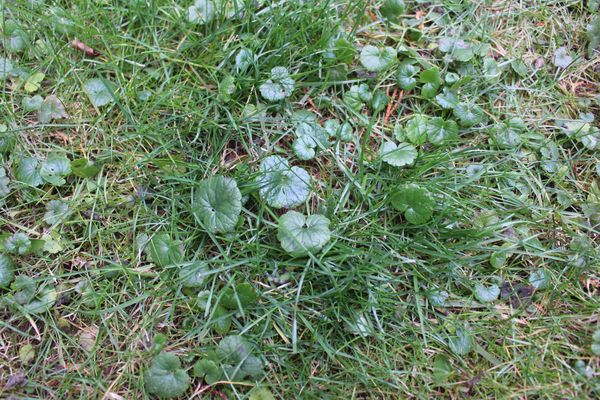The enormous variety of pests that can wreak havoc on a flower or vegetable bed is well known to gardeners. Slugs are often at the top of the list regarding ruining gardens. They will consume seedlings and foliage. However, picking up low-hanging fruit is also a possibility.
In this post, I'll explain how to spot slug eggs and stop them from becoming problematic in your garden or outdoor area.
What Do Soil Slug Eggs Look Like?
Learning to recognize slug eggs is the first step in finding a solution to your issue. Slug eggs often appear in groups of up to 80; there is never a single egg in a slug egg cluster.
The color of the eggs may range from white to yellow to brown to even translucent, depending on the species and age. As eggs grow and approach hatching, they will turn darker.
They are also sticky because slugs emit slime to lubricate their movement as they move.
Slugs and snails both deposit their eggs in the soil or on the ground's surface. They will cover the eggs with some organic material once they have been laid as protection.
Soil beads or eggs?
Even the most seasoned gardener is prone to making the frequent error of mistaking soil beads for slug or snail eggs. The form and color of these two unrelated items match.
You may often find soil beads, a fertilizer, in potting soil. Said they benefit plants, and you shouldn't pluck them out.
You can distinguish between snail eggs and dirt beads by examining the size and arrangement. The size of soil beads is often significantly smaller and more akin to insect eggs. Additionally, they are not huddled together or coated with slime.
If you see several beads scattered around your soil, they are probably soil beads rather than eggs.
Slug Vs. Snail Eggs
The absence of a shell distinguishes slugs from snails the most. But the distinction between them and their eggs is hardly noticeable.
One egg can only be distinguished from another by careful inspection. Although translucent and mushy before calcification, a snail's shell is there at birth, and you may see it in the egg.
It's crucial to note that slugs and snails threaten your garden and may be eliminated using the same techniques. The differences in the two species' eggs are thus not very significant.
Are Slug Larvae a Problem?
Undoubtedly an issue is slug eggs found in the ground. Slugs often arrive in large numbers, yet a single one can only harm a little.
Slugs produce eggs numerous times yearly—but no more than six times. Depending on the species and climate, the eggs may hatch in two weeks to a month, according to Oregon State University.
This means that they multiply extraordinarily rapidly, and in less than a growing season, you may have a colony of slugs or snails causing havoc in your garden.
How Harmful Are Slugs to Plants?
Almost every plant you place in front of slugs will be eaten. Although they like rotting plant matter and fungus, they will consume just about any vegetable, including carrots, lettuce, tomatoes, cabbage, and other greens.
They are known to like apples and strawberries, so food that has fallen to the ground or is low to the environment is also unsafe.
Finally, they will also consume flowers and plants. Therefore, both your food garden and your flower garden pose risks.
Because they are easy to consume, slugs prefer leaves, soft fruits, and vegetables. They can't bite as hard as other animals can since they have small teeth and rough tongues.
A slug's labor may be identified by the mucus trail they leave behind. Slugs must lubricate the underside of their bodies to move, and the path they leave behind may last for hours or even days.
Laying and Hatching Eggs
If you have a slug issue, the only method to remove them is to destroy their eggs so they can't reproduce anymore. You'll need to locate the egg clusters and take them out.
Where Do Eggs Get Laid by Slugs?
Slugs will place their eggs in a small hole in the earth and fill the gap with organic material to protect it. They prefer to lay the eggs behind an extensive log or another similar item to cover the eggs and shield them from the weather.
Remember that slugs and snails prefer damp dirt over dry soil as you search for eggs.
How long do eggs take to hatch?
You possibly have a few weeks before your garden is overwhelmed by controllable slugs if the weather is not too frigid. In less than a month, most eggs will hatch.
However, it may take up to 5 months for eggs deposited in the late winter to hatch. Because it is too chilly and the eggs require heat to grow, they cannot hatch during the winter.
How Fast Do They Reproduce?
Slugs reproduce extraordinarily fast; a single slug will lay over 500 eggs throughout its lifespan. They may mate with almost any other slug due to their hermaphroditic nature.
A slug may lay eggs six times a year, and it only takes a baby slug six months to mature and begin reproducing. You may have thousands of slugs in your yard within a year if they deposit anywhere from 3 to 80 eggs in the soil during one mating cycle.
This is the worst-case situation, however. Slugs are towards the bottom of the food chain, making hundreds of species that eat them easy pickings.
How to Remove Snail or Slug Eggs
Removing and killing the eggs is the only method to stop the infestation. The egg clusters are held together by slime, so you'll need to pick them up with a trowel or gloves if you want to remove them.
They will quickly escape if you pick them up with your hand. Put them all in a bucket when you have picked them up.
What Are the Best Practices for Slug Eggs?
Two choices are available. You may dispose of them, ideally far from your house (or anyone else's, for that matter). By doing this, they won't lay their eggs close to your garden, creating difficulty.
The eggs may also be destroyed by adding seawater to the bucket containing the eggs. Slugs are effectively killed by saltwater and salt in general.
You may ask why salt water isn't poured into the ground. You could, but salt is terrible for the soil, and it's a good idea to dump it into the bucket and throw it away elsewhere instead.
Slug Infestation Prevention
Along with removing the eggs, it's a good idea to keep the slug population in your yard under control. There won't be any eggs if there are no slugs!
Nematode solutions are a fast, simple, and efficient approach to removing slugs from your yard.
It kills slugs by infecting them with germs. Nematode solutions are available for purchase at most garden stores, and mixing them into the soil is a very efficient slug-control technique.
Pellets for slugs are yet another efficient insecticide. They are only safe to use; however, you can ensure that your animals won't be able to get them since they may be harmful to them. Slugs often consume pellets scattered around plants, and they perish.
Before administering a pesticide, ensure that you are aware of all potential dangers and always observe the label's instructions.
Slugs may also be found, picked up by hand, and discarded. However, this approach could be more effective since other slugs will enter your garden. To keep your garden secure, you must go on a slug hunt every other evening, which takes time.
Allowing predators into your yard is an excellent way to eliminate slugs; birds and hedgehogs eat slugs. But some predators could be omnivorous, so they might devour your garden's vegetables and slugs.
Contrary to common belief, obstacles like eggshells and bark mulch are less practical than previously believed in reducing slug populations. Even if they were, you'd have to place a barrier around each plant in your garden and then occasionally replace it.
Therefore, the most effective approach to keep slugs out of your garden is by far using chemical remedies.
Conclusion
Understanding how to identify slug eggs is key in maintaining a healthy garden, especially considering that slugs lay a significant number of eggs in soil. These eggs often hatch, resulting in a proliferation of garden slugs that can wreak havoc on your plants. Look for clusters of tiny, pearl-like orbs often hidden beneath the surface, or follow the slime trails slugs leave behind as a calling card. It's worth noting that slugs possess both male and female reproductive organs, which allows them to produce fertilized eggs with ease, increasing their potential for infestation.
There are several ways to kill slug eggs and manage these pests. Using slug baits and slug pellets are among the most popular, but other remedies such as a slug beer trap, or soaking them in soapy or salty water, have proven to be quite effective as well. Remember, early detection and action can make a big difference in controlling these garden nuisances. So, keep a keen eye out for these slimy invaders and be ready to combat them, ensuring a thriving and slug-free garden.
Slugs are a grave threat to any garden since they like delicate fruits, vegetables, stems, and leaves. They also reproduce quickly, so it's conceivable for your garden to host many slug generations in a single year. Slugs may be easily avoided, however. In addition to being food for several animals, they are also readily damaged by insecticides, and seawater may kill their eggs. Slug eggs resemble groups of small, slimy balls that may be white, yellow, brown, or translucent and have a variety of colors. You may kill them with saltwater or toss them far away once you discover them.






